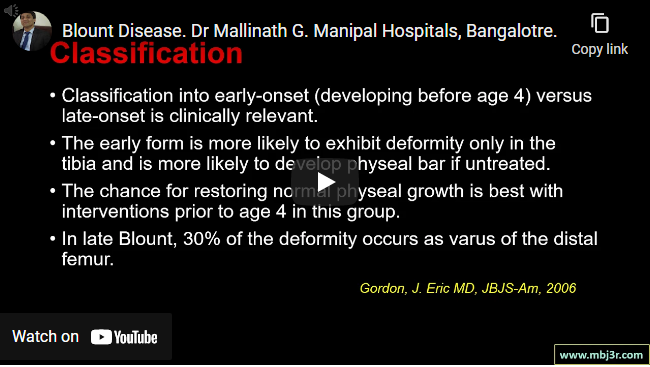- Blount’s disease is progressive pathologic genu varum centered at the tibia
- Infantile and adolescent types
- Excessive medial pressure produces an osteochondrosis of the medial proximal tibial physis and epiphysis, osteochondrosis can progress to a physeal bar
- Based on a study children with Blount disease have increased height and width of the medial meniscus, and greater frequency of abnormal signals in the posterior horn of the medial meniscus
- Bracing may be most effective for a metaphyseal-diaphyseal angle greater than 11°.
- Osteotomy of the tibia is a mainstay of surgical treatment
- Hemiepiphyseodesis ia a less-invasive surgical intervention, but it does not correct rotational or sagittal plane deformities
- Prognosis is guarded for these children due to overall health risks associated with high BMI as well as progressive joint pain

